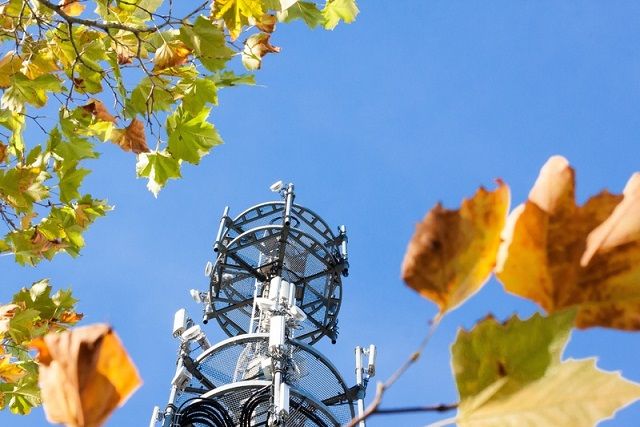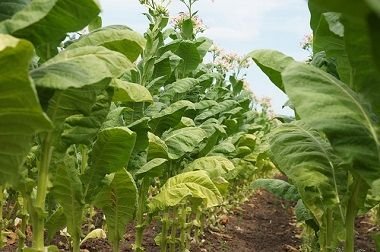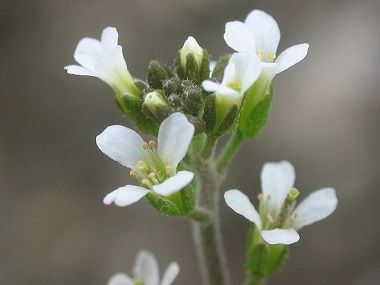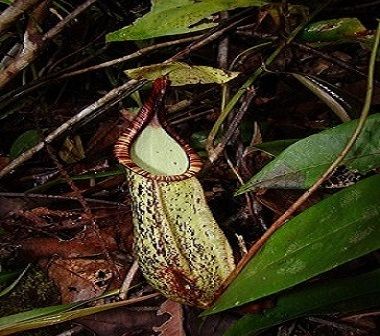A peep into the weird world of plant's communication

There is no doubt that living organisms generally share some basic characteristics. From my knowledge of basic biology, for an organism to be considered living, it must have the 'MR NIGER D' characteristics. Thus, a living organism must be able to move, respire, feed, respond to stimuli, grow, excrete, reproduce and die at the end of it all. I like to call these characteristics as primary because animals, especially humans happen to possess the ability to communicate. Whether other species of animals apart from humans communicate with one another is a subject of an investigation by scientists.
Just as scientists are still trying to grasp the idea that communication might be a characteristic of most animals, the idea of plant communicating with each other or even with animals sounds more ridiculous. Imagine a plant being able to call 911 and reinforce against attacks? perhaps not imaginable but what if I tell you scientists have found something close it?
Plants have been found to possess some primitive form of communication amongst themselves and some animals largely through the use of chemical signals. Some of these signals are in response to distress or functional calls to animals for help, a form of caveat to other plants either for territory demarcation or against an approaching enemy among many other uses.
 source: [pixabay](https://pixabay.com/en/tobacco-plant-smoking-tobacco-plant-1792070/)
source: [pixabay](https://pixabay.com/en/tobacco-plant-smoking-tobacco-plant-1792070/)Tobacco, Nicotiana tabacum is one of those plants that have been reported to possess the ability to call for help when in distress under the attack of insect pests. The plant simply releases chemical signals which are specifically picked up by the big-eyed bug, an insect predator. The bud responds by locating the plant and picks up the insect pests as its own food. A symbiotic communication, I must say.
I happened to have shared apartment with bad neighbors in the past and it was really an experience I would not want to repeat itself. Perhaps it would have been different if the sagebrush plant, Artemisia tridentata had been my neighbor. The plant is known for sending out chemical signals to warn its neighbors of an impending attack by hornworm after defending itself from the insect by secreting trypsin protein inhibitors, a chemical that makes protein indigestible by the insect as well as stunt its growth. The wild tobacco is a common beneficiary of sagebrush's kindness. It responds to this act by synthesizing its own trypsin protein inhibitors in defense of itself against the attack of the hornworm.
The above type of information transmission in plants has been reported to be synonymous with electrically generated pulses and a kind of voltage-dependent signaling system which is in a lot of ways similar to the central nervous system in animals. This hypothesis was proven by Ted Farmer and his team of researchers at the University of Lausanne. They carried out a research which involves placing micro-electrodes on the surfaces and stalks of leaves of Arabidopsis thaliana. Thereafter, they introduced the Egyptian cotton leafworms to feed on the leaves of the plant. A change in voltage in the tissues of the plant radiated out from the sites being eaten by the worms to the stalk and beyond after few seconds. About the same time, a defensive compound which has earlier been reported to be associated with the plant was found to have accumulated in the various organs of the plants.
An invasive plant genus, Centaurea commonly known as knapweed has been known to communicate the extent of its territory to other plants through the synthesis of certain chemicals that kills off erring neighboring plants. Only Lupin, another plant genus has been able to stand up to knapweed so far. It does this by synthesizing a defensive chemical, oxalic acid which serves as protective barrier against knapweed's chemicals
Another form of interactive communication has also been reported to occur among plants of the same siblings. As plants are known to compete for resources in form of light, space, nutrients, water and so on; this competition has been observed to be less intense among plants of the same siblings growing in the same environment compared to non-sibling plants. For example, the sea rocket plant (genus, Cakile) was found to produce chemicals that have the capacity to hurt non-siblings without any action on sibling plants within the same habitat.
Plant - mammal communication
A lot of folks in the steemstem discord channels like to refer to me as someone who communicates with plants. Perhaps it will get to that point someday, but trying to imagine the possibility of plants and humans communicate with each other for now could make one lose his/her mind. However, communication does exist between a particular plant and animal species in nature. The concave structure of the pitcher Nepenthes hemsleyan has been found to be specially adapted for reflection of bat's echolocation. The reflection by the pitcher of the plant makes bats be able to located it for their shelter.
In summary
Plants, from an overwhelming evidence do have a way of communicating. Perhaps they even do communicate much more than we already know. So far, most of the exchange of information is in form of chemical signals relating to distress, defense, territorial protection etc. However, a form of communication between the pitcher plant and bats has been established through various researches. It would be interesting to know what the future will unravel in this aspect of scientific enquiries.
In last 15 years the idea that plants are communicating has become much more accepted. It’s exciting to unravel all these different realms of plant communication. —Richard Karban, University of California, Davis
Thank you for reading.
References
*All images used in this post were obtained from free sources


 By
By  By Vincent,
By Vincent,
awesome stuff gentle!!! I have a question for you since you're the plant expert =). I'm vegan, and meat eaters always come with the same argument: "plants feel pain too". I always thought this is BS, because they don't have a central nervous system and cannot "think". But now, reading that they communicate with eachother and even insects, you're making me doubt about their self-awareness heheh. So what do you say?
I had the same thought:)
As I decided that could be possible it for me is a good thing to be thankful for all what I eat and what serves me to survive in this world. Everything is feeding by everything. It plays a role for the human consciousness to relate to this fact in some way or another.
It is really a complex situation right now and a subject of big debate in the scientific world. A lot of active research going on in the field as well. Personally, I think there might be more discoveries on this. Did you read my article on plants responding to music? I sincerely believe they feel pains, in all honesty.
I haven't read it but now I will! Thanks! And damn that wasn't the answer I hoped to read heheh
sorry if I'd bust your bubble :)
upvoted and resteemed. upvote back?
What an interesting topic being discussed here. I will like you to research on Plant Body Communication, if there is any, since we have Human Body Communication(HBC) which is my next topic on steemit.
Good luck with that brother. If you are stuck on something, perhaps I could bail you out.
Yes, Plants Are Conscious And Can Communicate With Other Plant Species.
yea...that seems to have been proven beyond doubts.
Lovely!
I would like to leave a totally unscientific comment. As I see all life on earth as a huge organism feeding each other, defending, attacking and communicating the expression came into my mind that the bee makes love to the blossom and the honey gives those who feed of it the sweetest experience.
I started a novel where I created a character who can talk to trees. I didn't finish and don't know if I ever will but I liked this skill a lot :)
Communication - language - code is always very fascinating as well as trying to translate.
Thank you for this inspirational topic of yours!
Thank you Erika. I think you should try and finish the novel. Would be interesting to read and plant scientist could derive a lot of inspirations from it. Understanding the psychology of issues can provide an avenue to unravel the mysteries behind those issues.